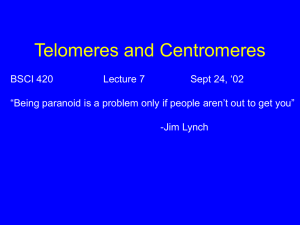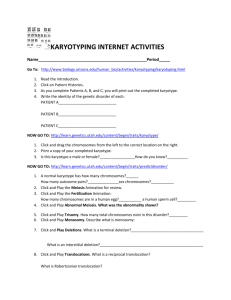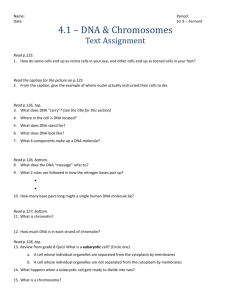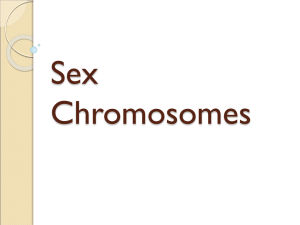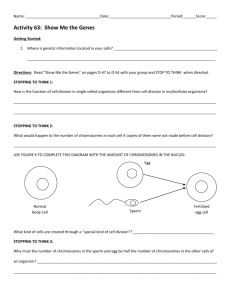Chromosomes and Inheritance Go to http://learn.genetics.utah.edu
advertisement
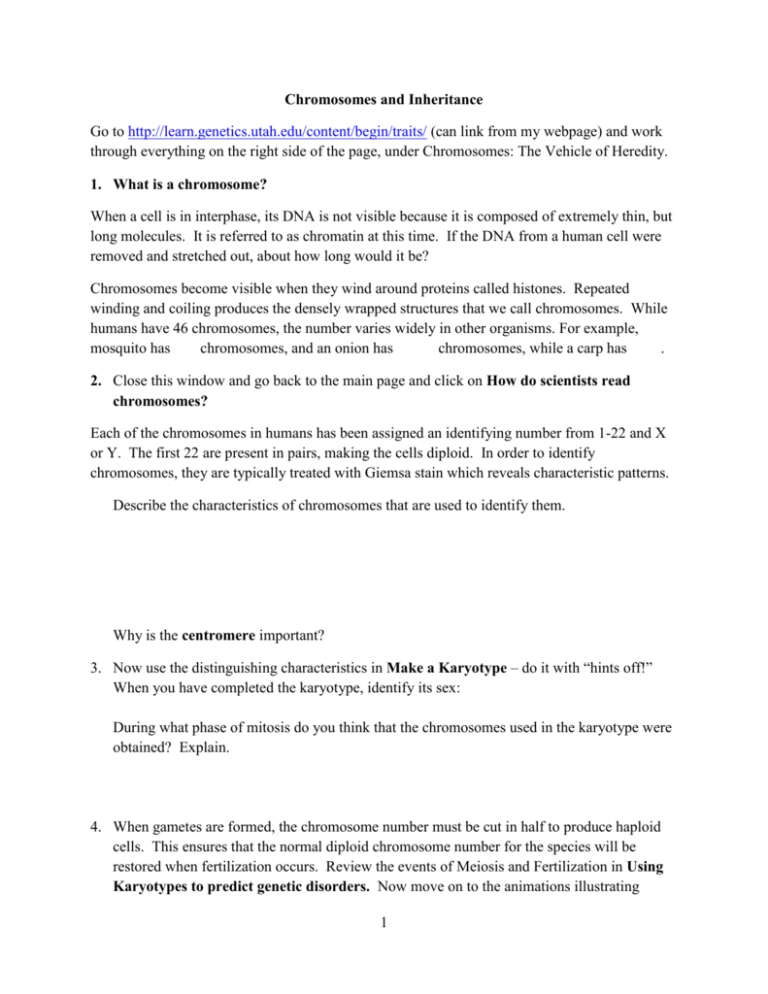
Chromosomes and Inheritance Go to http://learn.genetics.utah.edu/content/begin/traits/ (can link from my webpage) and work through everything on the right side of the page, under Chromosomes: The Vehicle of Heredity. 1. What is a chromosome? When a cell is in interphase, its DNA is not visible because it is composed of extremely thin, but long molecules. It is referred to as chromatin at this time. If the DNA from a human cell were removed and stretched out, about how long would it be? Chromosomes become visible when they wind around proteins called histones. Repeated winding and coiling produces the densely wrapped structures that we call chromosomes. While humans have 46 chromosomes, the number varies widely in other organisms. For example, mosquito has chromosomes, and an onion has chromosomes, while a carp has . 2. Close this window and go back to the main page and click on How do scientists read chromosomes? Each of the chromosomes in humans has been assigned an identifying number from 1-22 and X or Y. The first 22 are present in pairs, making the cells diploid. In order to identify chromosomes, they are typically treated with Giemsa stain which reveals characteristic patterns. Describe the characteristics of chromosomes that are used to identify them. Why is the centromere important? 3. Now use the distinguishing characteristics in Make a Karyotype – do it with “hints off!” When you have completed the karyotype, identify its sex: During what phase of mitosis do you think that the chromosomes used in the karyotype were obtained? Explain. 4. When gametes are formed, the chromosome number must be cut in half to produce haploid cells. This ensures that the normal diploid chromosome number for the species will be restored when fertilization occurs. Review the events of Meiosis and Fertilization in Using Karyotypes to predict genetic disorders. Now move on to the animations illustrating 1 abnormal meiosis, and those illustrating how monosomy and trisomy would be produced. Finally go through deletions and translocations. How do terminal deletions differ from interstitial? Distinguish between reciprocal and Robertsonian translocations. Now for the quiz! In the box, identify the outcome for each of the fertilization scenarios: 5. Are telomeres the key to aging and cancer? We discussed the role played by telomeres in limiting the number of times a cell can divide. Review the information on DNA replication and how telomeres protect the coding portions of DNA. You can listen to the podcast if you want, but it’s not required. Now read the main entry on telomeres. About how many base pairs are lost each time a cell divides? 2 What enzyme maintains telomeres in sex cells and young embryos in which frequent cell division is necessary? Explain how cancer cells are able to become immortal. Telomeres have also been implicated in normal aging. What other factors appear to contribute to the decrease in effective cell functioning in aging humans? Is it reasonable to expect that the “normal” human lifespan could continue to increase to be hundreds of years? Explain. 6. Molecular Genealogy Describe each of the four types of DNA found in an individual and explain how each can be used to trace family lineage. Autosomal X chromosomal Y chromosomal Mitochondrial What is a haplotype? 3

